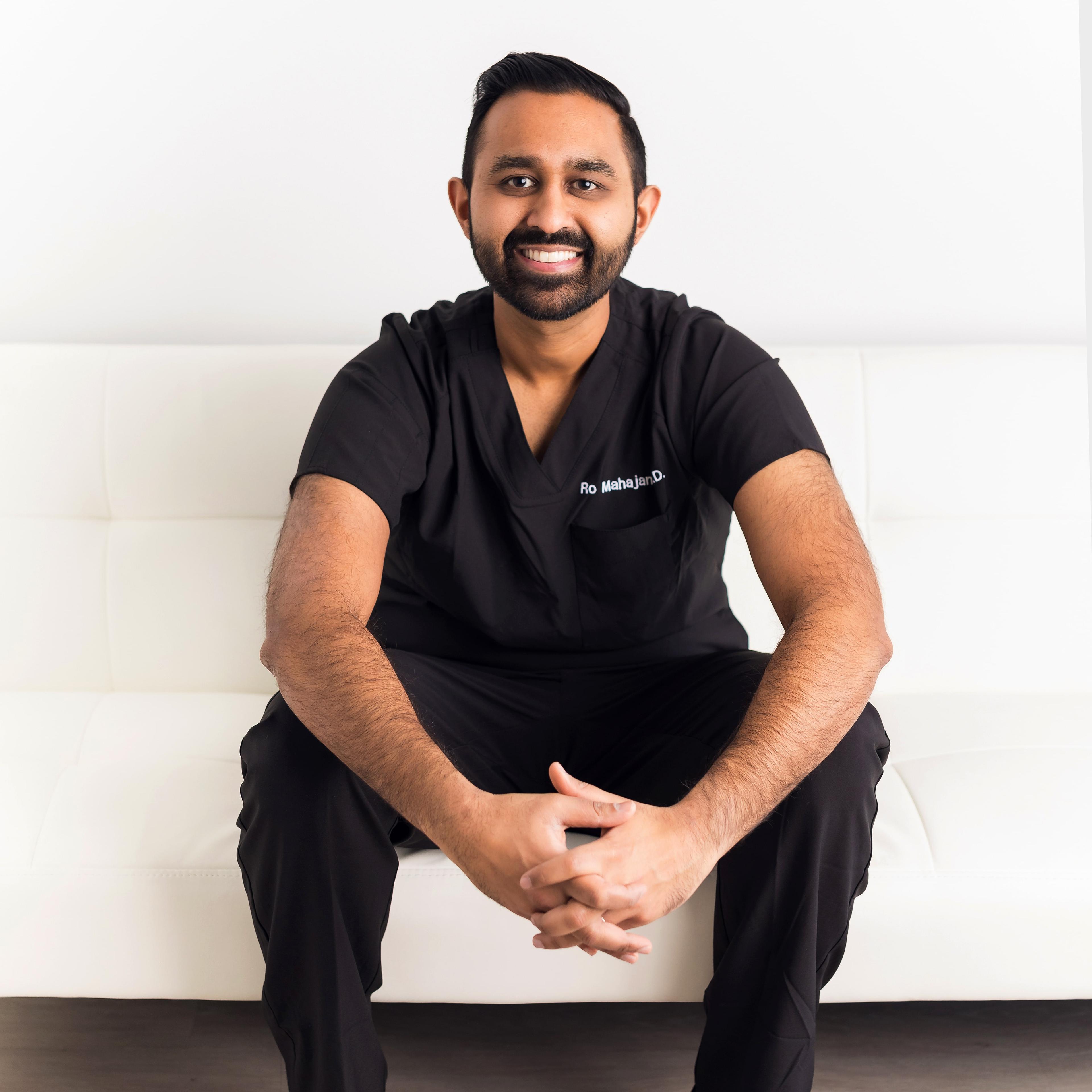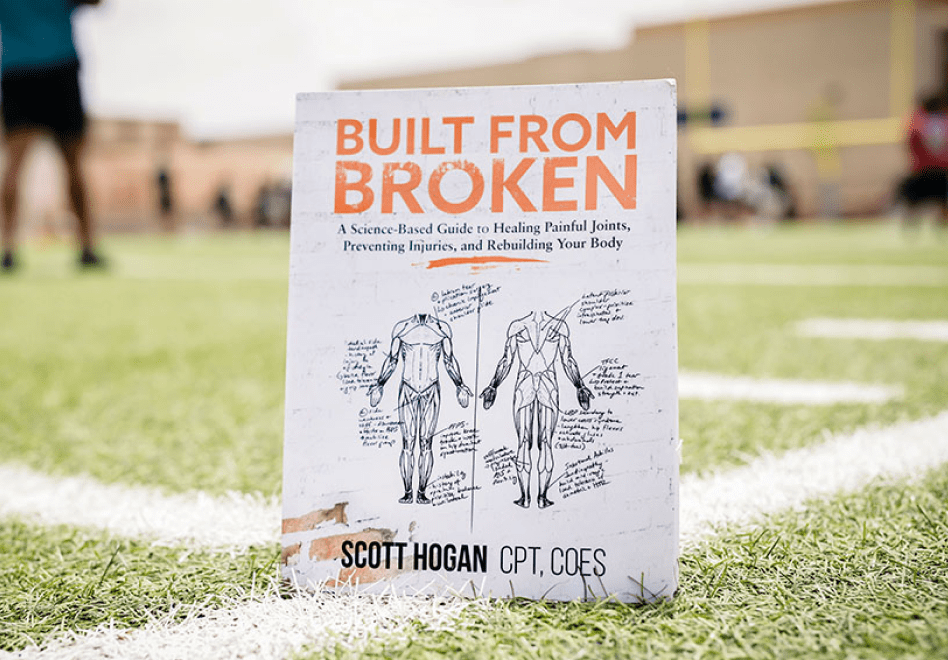
Be built (to last).
The right supplements can help you recover naturally and build a resilient body.

Supplement Quiz
Take this short quiz to discover the perfect supplements for your needs and goals.
About SaltWrap

Built from Broken
Get the best-selling book from SaltWrap founder, Scott Hogan, and start rebuilding today.
What Is Regenerative Medicine?

By Dr. Ro Mahajan, MD
If there’s one universal concept that athletes and active people of all backgrounds are familiar with, it’s that injuries and other setbacks are virtually inevitable. It’s what makes resilience – both physical and mental – a critical attribute for elite performers.
However, a concept many of these people might not be as familiar with is that our bodies are designed to heal themselves.
This is the core idea behind regenerative medicine.
Unlike traditional treatments that might just address symptoms, regenerative medicine focuses on harnessing your body’s natural healing capabilities to repair and regenerate damaged tissues. In other words, it seeks to address the root causes of symptoms.
It’s becoming an increasingly popular choice for treating musculoskeletal conditions – those that affect muscles, bones, joints, tendons, and ligaments – because it offers a more natural approach to healing.

How Regenerative Medicine Works
Regenerative medicine involves techniques that support or stimulate the body’s natural healing processes.
For instance, in cases of chronic (degenerative) musculoskeletal pain, the symptoms of pain and inflammation are signals from injured tissue indicating a need for repair. These signals are meant to prompt the body’s inflammatory system to send cells to heal the damaged or degenerated tissue.
Unfortunately, the body’s response to these signals is often insufficient to heal the tissue fully, resulting in a state of chronic inflammation.
It sounds like an easy problem to fix, right?
Not exactly.
When patients visit a conventional doctor for these issues, the typical treatments offered include NSAIDs, corticosteroid injections, or even surgery. This traditional approach often focuses on alleviating symptoms of pain and inflammation without addressing the underlying cause. In contrast, regenerative medicine aims to fix the underlying cause by healing the damaged tissue itself.
This subsequently reduces both inflammation and pain.
Applications of Regenerative Medicine in Musculoskeletal Health
You may be wondering, "What kinds of conditions can regenerative medicine effectively treat?"
Regenerative medicine is widely used for a variety of musculoskeletal issues, such as osteoarthritis, where joint cartilage has worn down, and tendon injuries, which are particularly common among athletes and active individuals.
For example, Platelet-Rich Plasma (PRP) therapy has been shown to help treat knee osteoarthritis by encouraging cartilage regeneration.
Similarly, stem cell therapy can facilitate the repair of damaged ligaments, which often occur in sports-related injuries.
In addition to these treatments, shockwave therapy can be beneficial for conditions like plantar fasciitis and tendinitis by stimulating tissue repair and reducing pain.
Laser therapy also offers a non-invasive approach to treating musculoskeletal pain by promoting cellular regeneration and reducing inflammation, making it a versatile option for various soft tissue injuries.
While each of these therapies offers unique benefits under different circumstances, they all seek to do the same thing: bolster the body’s innate healing mechanisms.
Benefits of Regenerative Medicine for Musculoskeletal Issues
So, what makes regenerative medicine a great option for athletes and active people facing musculoskeletal problems?
For starters, it’s minimally invasive.
Unlike traditional surgeries that require long recovery times, regenerative treatments are usually performed as outpatient procedures with minimal downtime. Patients often report less pain and faster recovery compared to more invasive options. This may be particularly appealing to competitive athletes.
Plus, these treatments might help you avoid – or significantly delay – the need for surgery. Again, for athletes, having the option to delay surgery into the off-season of their sport might be very appealing.
Who Is a Good Candidate for Regenerative Medicine?
Not everyone is a perfect candidate for regenerative medicine, but many people with musculoskeletal issues can benefit.
Ideal candidates are typically those who have tried other treatments without success or are looking to avoid surgery. In general, conditions like moderate osteoarthritis, tendonitis, and minor ligament injuries tend to respond well to regenerative approaches.
What To Expect from Regenerative Medicine
If you’re considering regenerative medicine, you’re probably curious about what the process looks like.
It typically starts with a consultation, where your regenerative medicine specialist will assess your condition and determine if regenerative treatment is right for you. The actual procedures are generally quick, with most patients experiencing only mild discomfort.
Recovery varies depending on the treatment and the individual, but many start to see improvement within weeks.
Choosing the Right Specialist for Regenerative Treatments
As with any area of medicine, choosing the right specialist is crucial to the success of your treatment.
Look for a professional with extensive experience in pain management/sports medicine and regenerative medicine. During your consultation, ask questions about their experience with your specific condition, the types of regenerative treatments they offer, and their success rates.
Some patients are hesitant to ask too many questions. But don’t be afraid to treat this like a job interview. Asking the right questions will help you find the best candidate for the job. It will also help you develop a rapport with the expert who will play a critical role in your recovery journey.
The right specialist will help you understand if regenerative medicine is the best path forward for you. And they can help inspire you to come back stronger.
Putting It All Together
Regenerative medicine offers an exciting alternative to traditional treatments for musculoskeletal conditions.
By focusing on healing from within, it provides a natural-based and less invasive way to address pain and promote recovery.
If you’re dealing with a musculoskeletal issue and are curious about whether regenerative medicine could be right for you, consider consulting a regenerative medicine specialist.
They can help you explore your options and develop a plan tailored to your needs.

Dr. Ro Mahajan, MD
Dr. Ro Mahajan received his MD from the University of Toledo College of Medicine in 2011. He has been double board-certified by the American Board of Anesthesiology in Anesthesiology and Pain Medicine since 2016.
Ro Mahajan MD trained in the nation’s top hospital systems, including the University of Michigan and UCLA. Today, he practices in two settings. He provides insurance-based mainstream medical care for pain-related conditions through one of the nation’s largest hospital systems.
He also offers natural and regenerative treatment options through Regenerative Orthopedix, a private practice in Fargo, North Dakota.
Ro Mahajan MD is a founding member of SaltWrap's Clinical Advisory Board.
Founder: Scott Hogan

I created SaltWrap to bring together the most practical ideas in therapeutic sports nutrition, corrective exercise, and functional fitness — with the goal of keeping you (and myself) strong, mobile, and built to last.
I've worked as an A.C.E. Certified Personal Trainer, Orthopedic Exercise Specialist, and nutritional supplement formulator.
But more importantly — I've spent most of my life battling injuries, joint pain, and just being plain beat up. So I know what it's like to struggle toward fitness goals.
SaltWrap is here to push you through injuries, setbacks and perceived physical limitations. To a place beyond what you think you're capable of. Sign up here to stay in the loop.
Learn more about my best-selling injury prevention and recovery book, Built from Broken.






